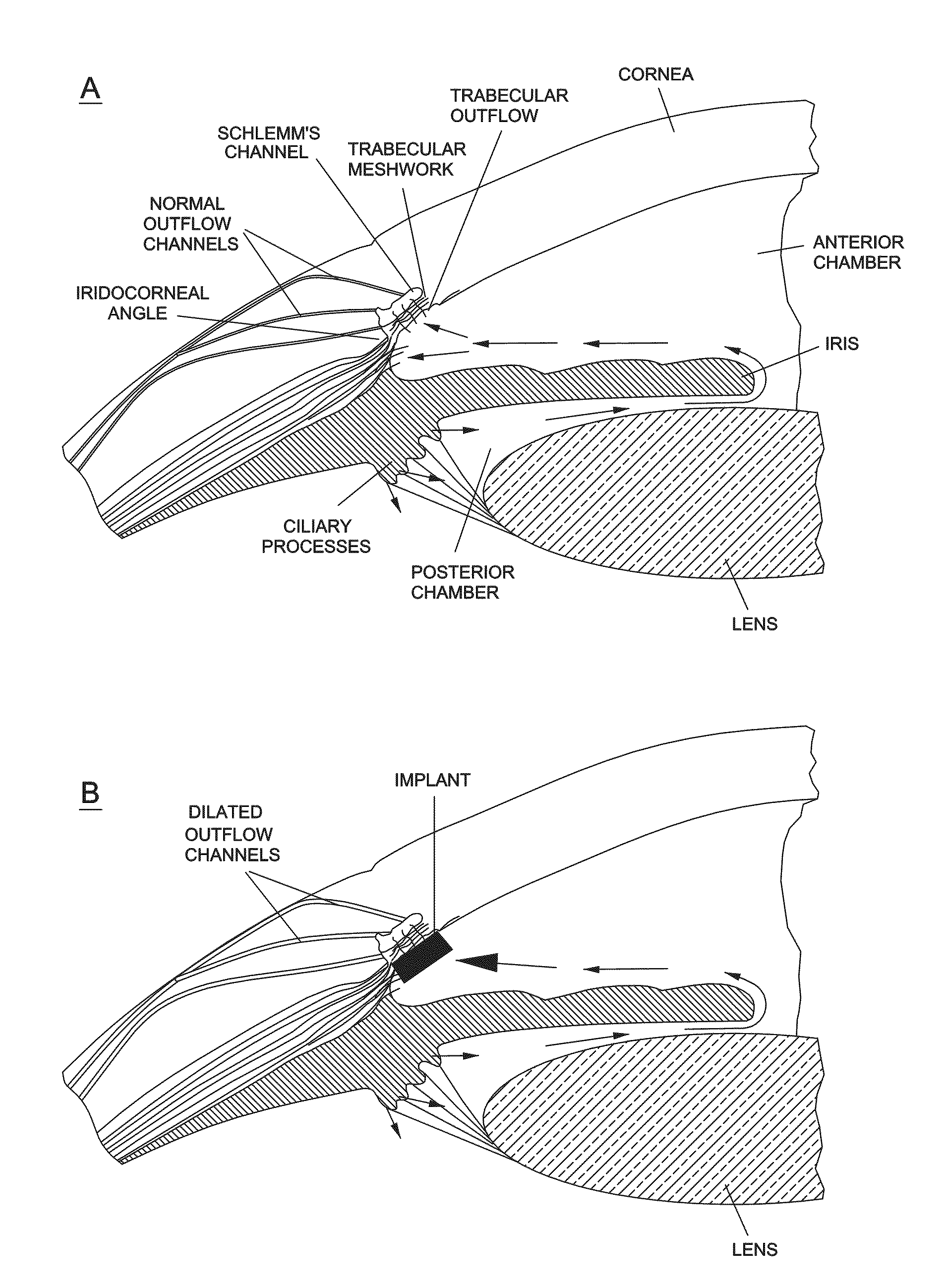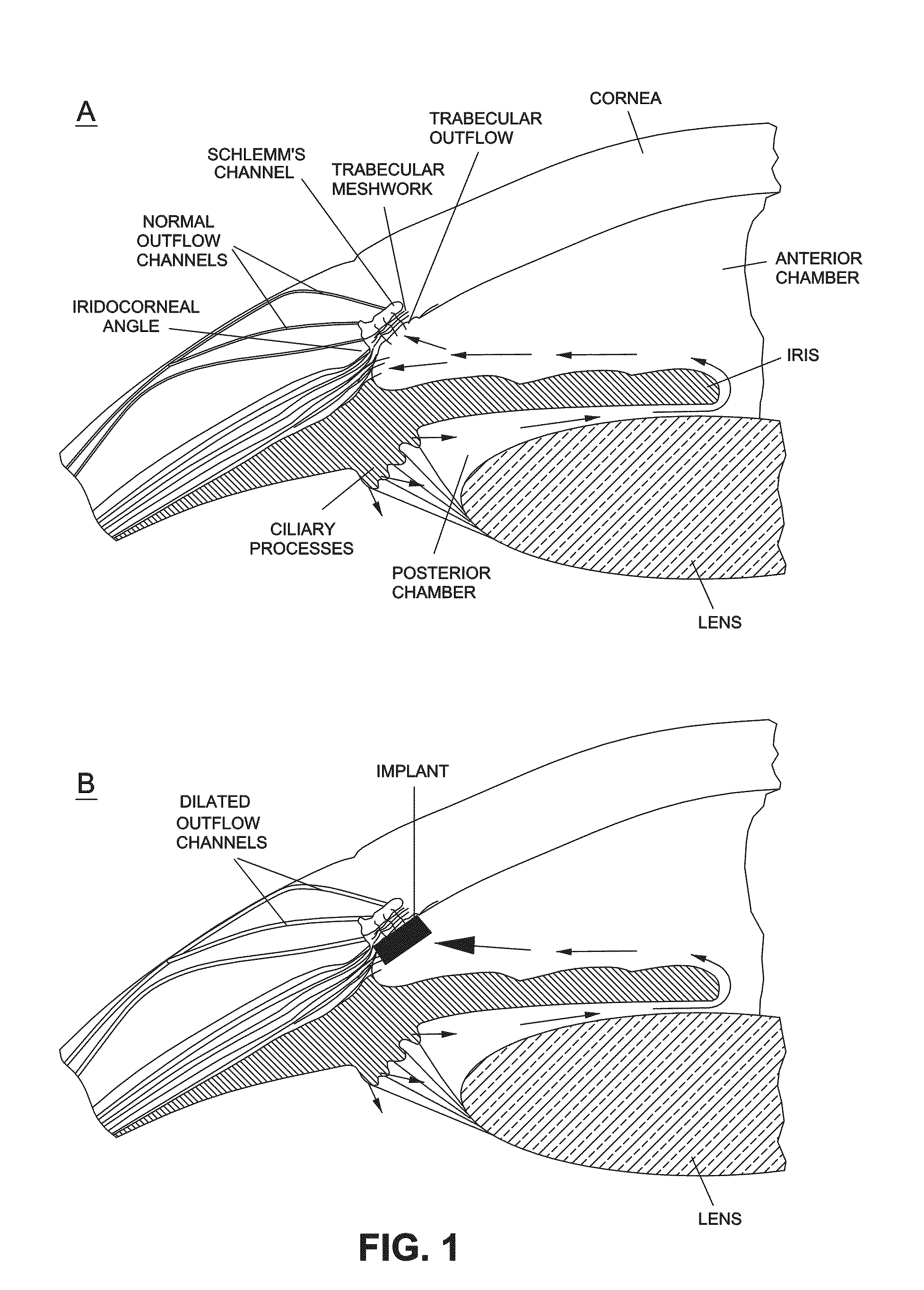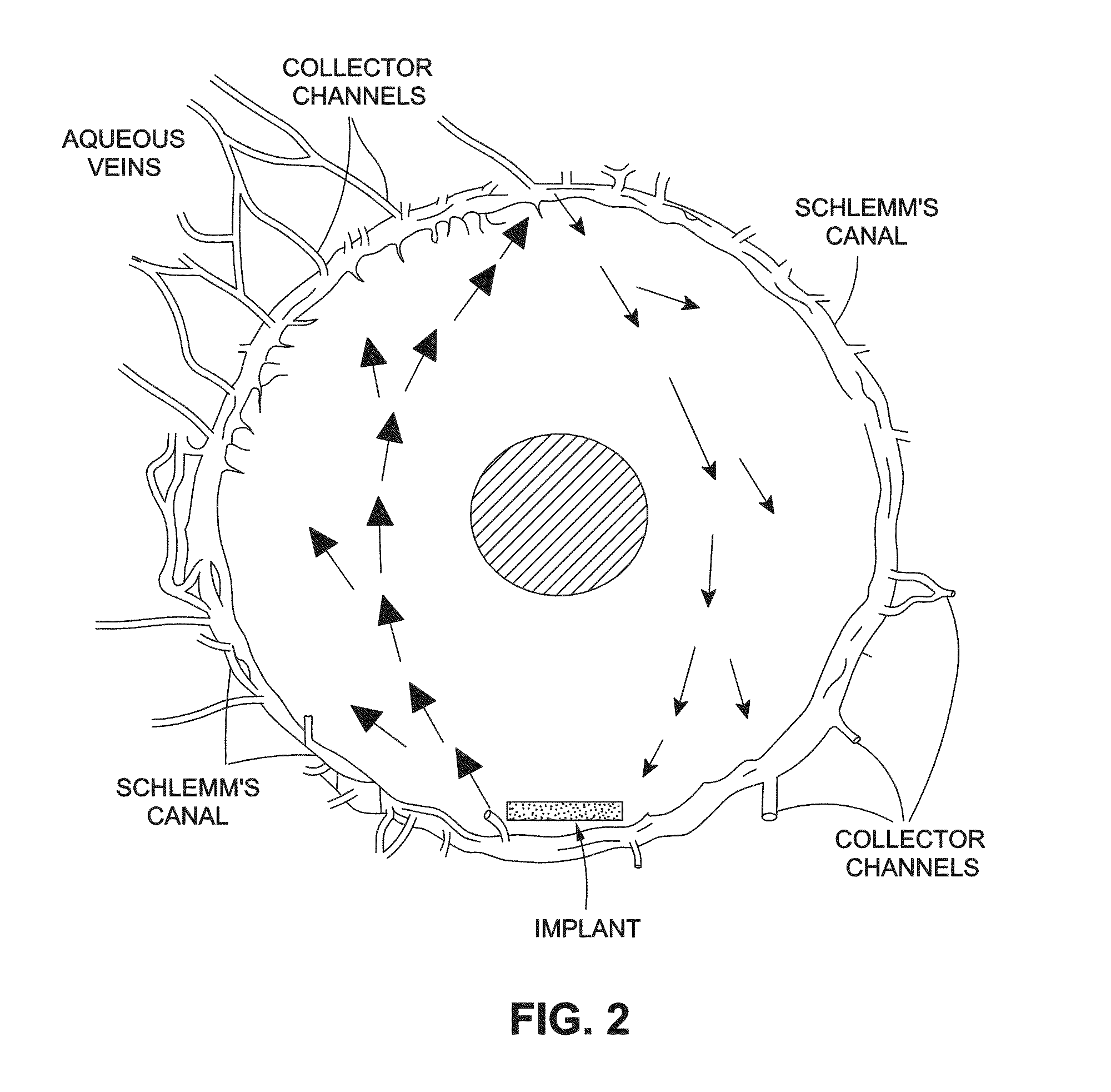Intraocular pressure reduction with intracameral bimatoprost implants
a bimatoprost and intraocular pressure technology, applied in the field of ocular conditions, can solve the problems of difficult glaucoma management, layer does not offer much resistance to aqueous humor outflow, etc., and achieve the effect of preventing progressive optic neuropathy and profound reduction of iop
- Summary
- Abstract
- Description
- Claims
- Application Information
AI Technical Summary
Benefits of technology
Problems solved by technology
Method used
Image
Examples
example 1
Intracameral Bimatoprost Implant with High Initial Release Rate
[0093]A bimatoprost implant comprising Bimatoprost 30%, R203S 45%, R202H 20%, PEG 3350 5% was manufactured with a total implant weight of 900 mg (drug load 270 ug). The in vitro release rates of this implant are shown in FIG. 8. This implant releases ˜70% over first 30 days. An implant with a 270 ug drug load would release 189 ug over first 30 days or 6.3 ug per day. The remainder of the implant (81ug) is released over the next 4 months (i.e. 675 ng per day).
[0094]A normal beagle dog was given general anesthesia and a 3 mm wide keratome knife was used to enter the anterior chamber of the right eye. The intracameral bimatoprost implant was placed in the anterior chamber and it settled out in the inferior angle within 24 hours. As shown in FIG. 5, the IOP was reduced to approximately −60% from baseline and this was sustained for at least 5 months (See FIG. 5). As shown in FIG. 4,the episcleral vessels are dilated.
example 2
Intracameral Bimatoprost Implant with Slow Initial Release Rate
[0095]A bimatoprost implant comprising Bimatoprost 20%, R203S 45%, R202H 10%, RG752S 20%, PEG 3350 5% was manufactured with a total implant weight of 300 ug or 600 ug (drug loads of 60 or 120 ug, respectively). The in vitro release rates of this implant are shown in FIG. 9. The implant releases ˜15% of the drug load over the first month. An implant with a 60 ug drug load would release 9 ug over first 30 days or 300 ng per day, thereafter, it releases ˜50 ug over 60 days or ˜700 ng / day. Like Example 1, it was found that the episcleral vessels were dilated.
example 3
[0096]The following experiment was carried out by inserting the implants described below in six Beagle dogs:
[0097]Implant Formulations:
[0098]2 mm Bimatoprost implant in applicator (20% Bimatoprost, 45% R203s, 20% RG752s, 10% R202H, 5% PEG-3350)
[0099]2 mm, Placebo implant in applicator (56.25% R203s, 25% RG752s, 12.25% R202H, 6.25% PEG-3350)
[0100]Dog 1,2,3: API implant intracameral OD (one 2 mm implant), OS placebo implant
[0101]Dog 4,5,6: API implant intracameral OD (two 2 mm implants), OS placebo implant
[0102]
Implant WeightDrug DoseDog ID(mg)(20% load, ug)CYJ AUS0.31763.4CYJ AYE0.32665.2CYJ AUR0.31563.0CYJ AUG0.302126.60.331CYJ BAV0.298125.40.329CYJ BBY0.306126.60.327
[0103]Surgical Procedure: Implants were loaded in a customized applicator with a 25G UTW needle. Under general anesthesia, normal beagle dogs had the implant inserted in the anterior chamber through clear cornea and the wound was self-sealing. The applicator is described in Published United States Patent Application 200...
PUM
| Property | Measurement | Unit |
|---|---|---|
| time | aaaaa | aaaaa |
| lengths | aaaaa | aaaaa |
| lengths | aaaaa | aaaaa |
Abstract
Description
Claims
Application Information
 Login to View More
Login to View More - R&D
- Intellectual Property
- Life Sciences
- Materials
- Tech Scout
- Unparalleled Data Quality
- Higher Quality Content
- 60% Fewer Hallucinations
Browse by: Latest US Patents, China's latest patents, Technical Efficacy Thesaurus, Application Domain, Technology Topic, Popular Technical Reports.
© 2025 PatSnap. All rights reserved.Legal|Privacy policy|Modern Slavery Act Transparency Statement|Sitemap|About US| Contact US: help@patsnap.com



